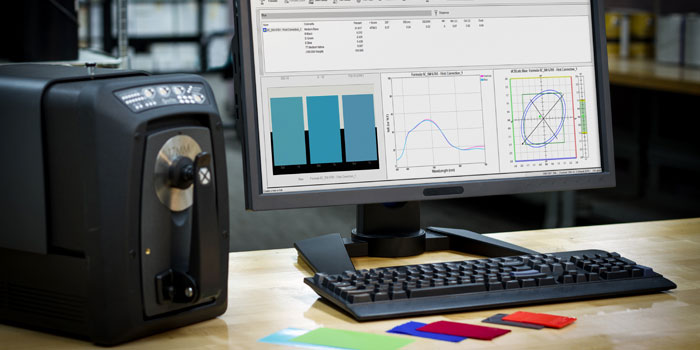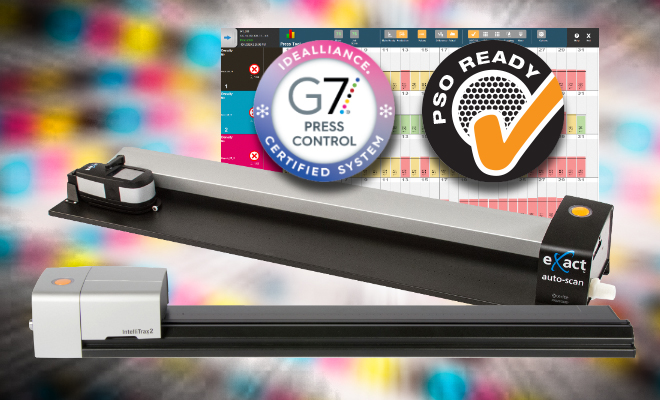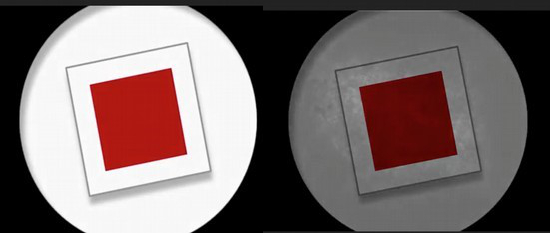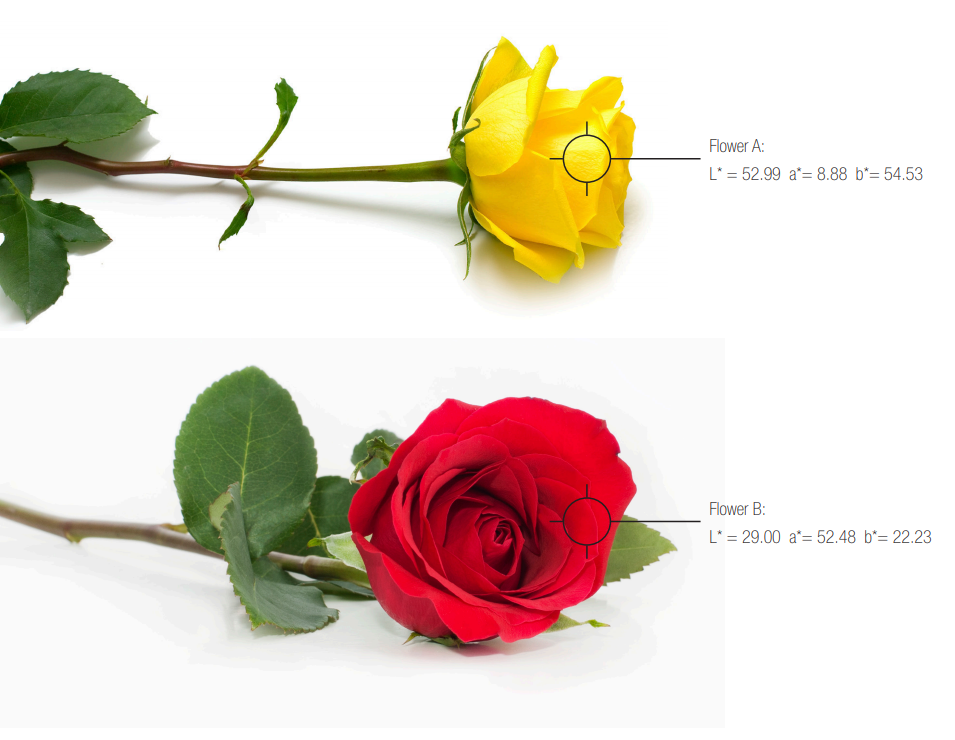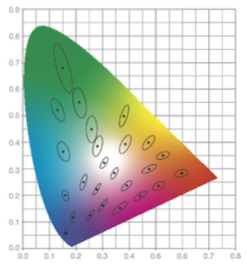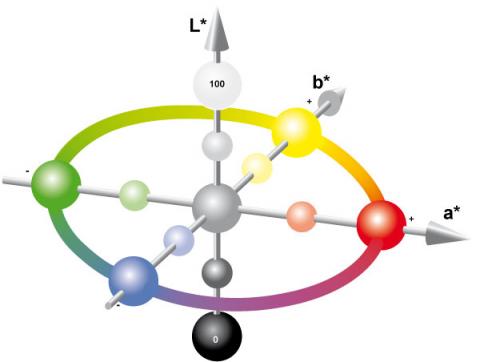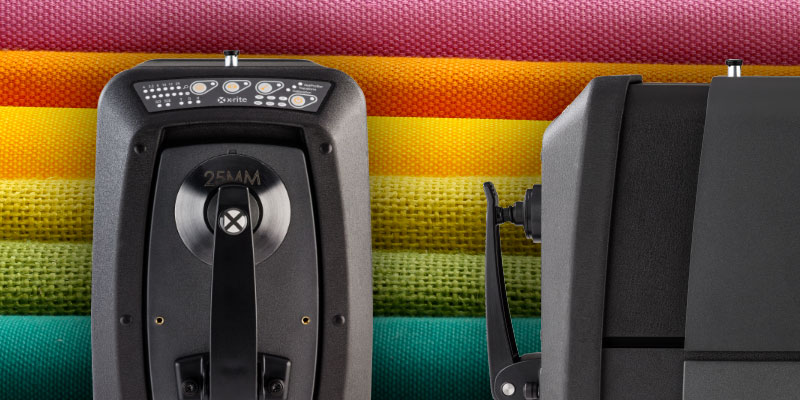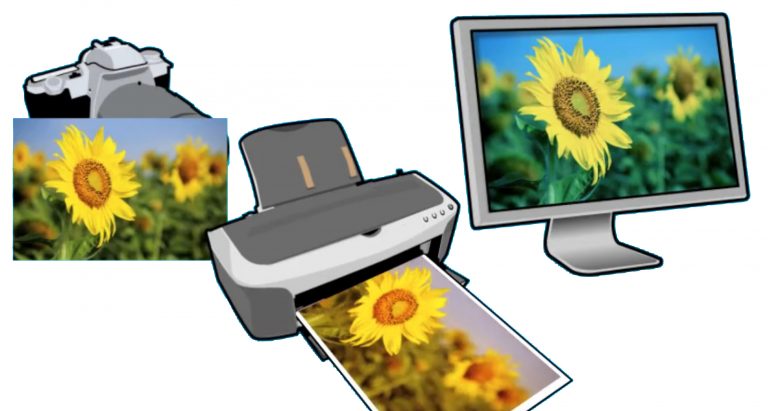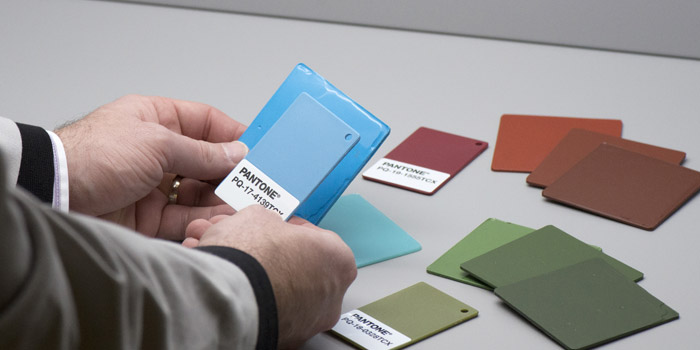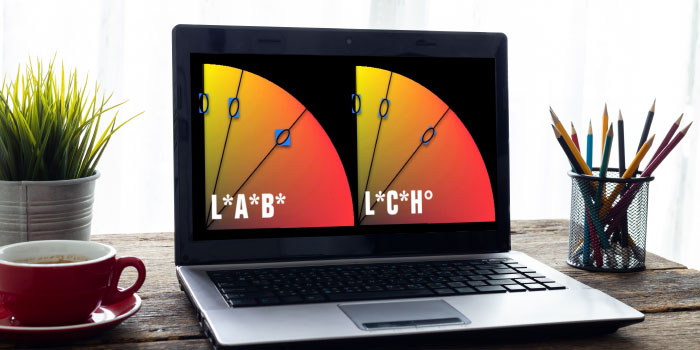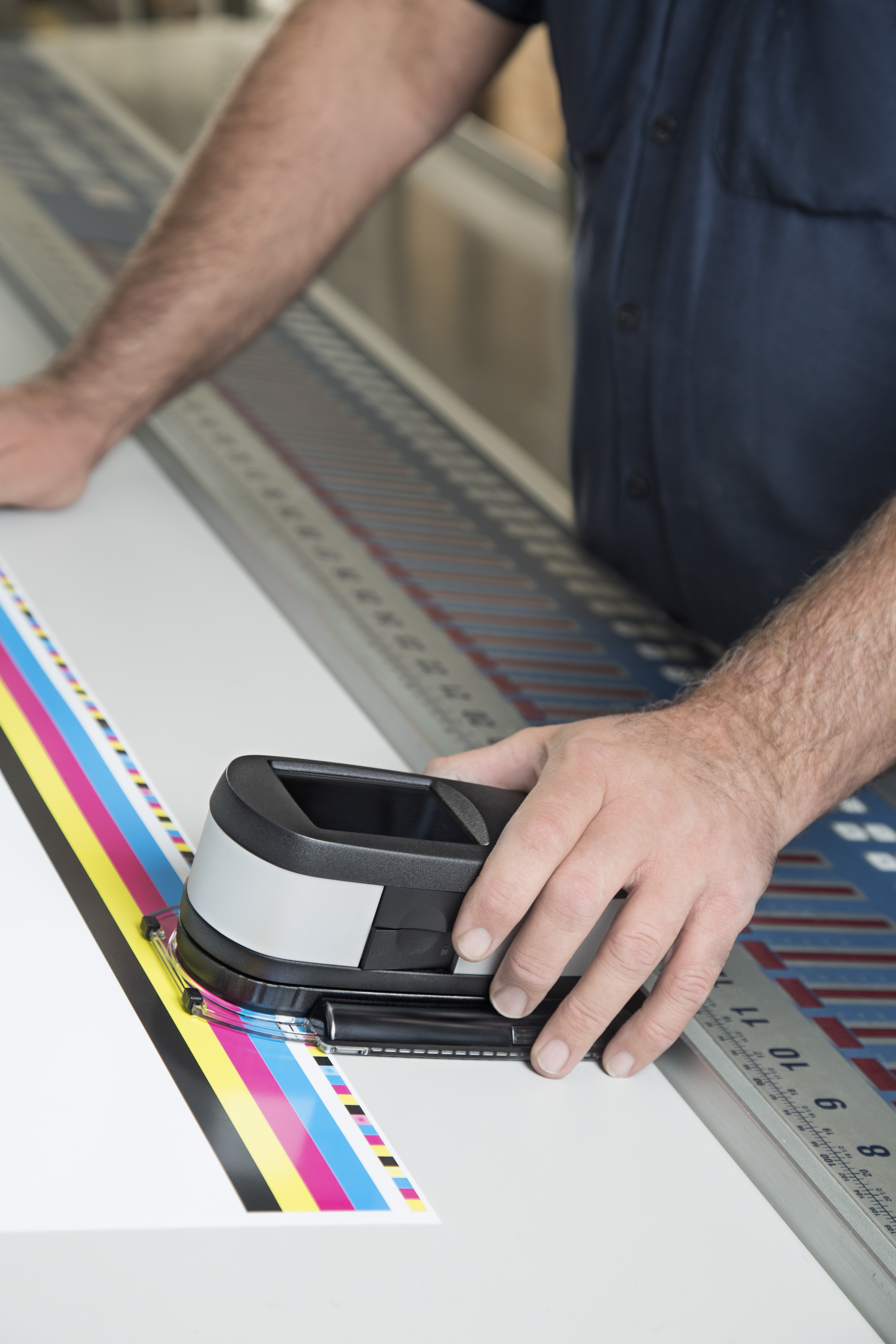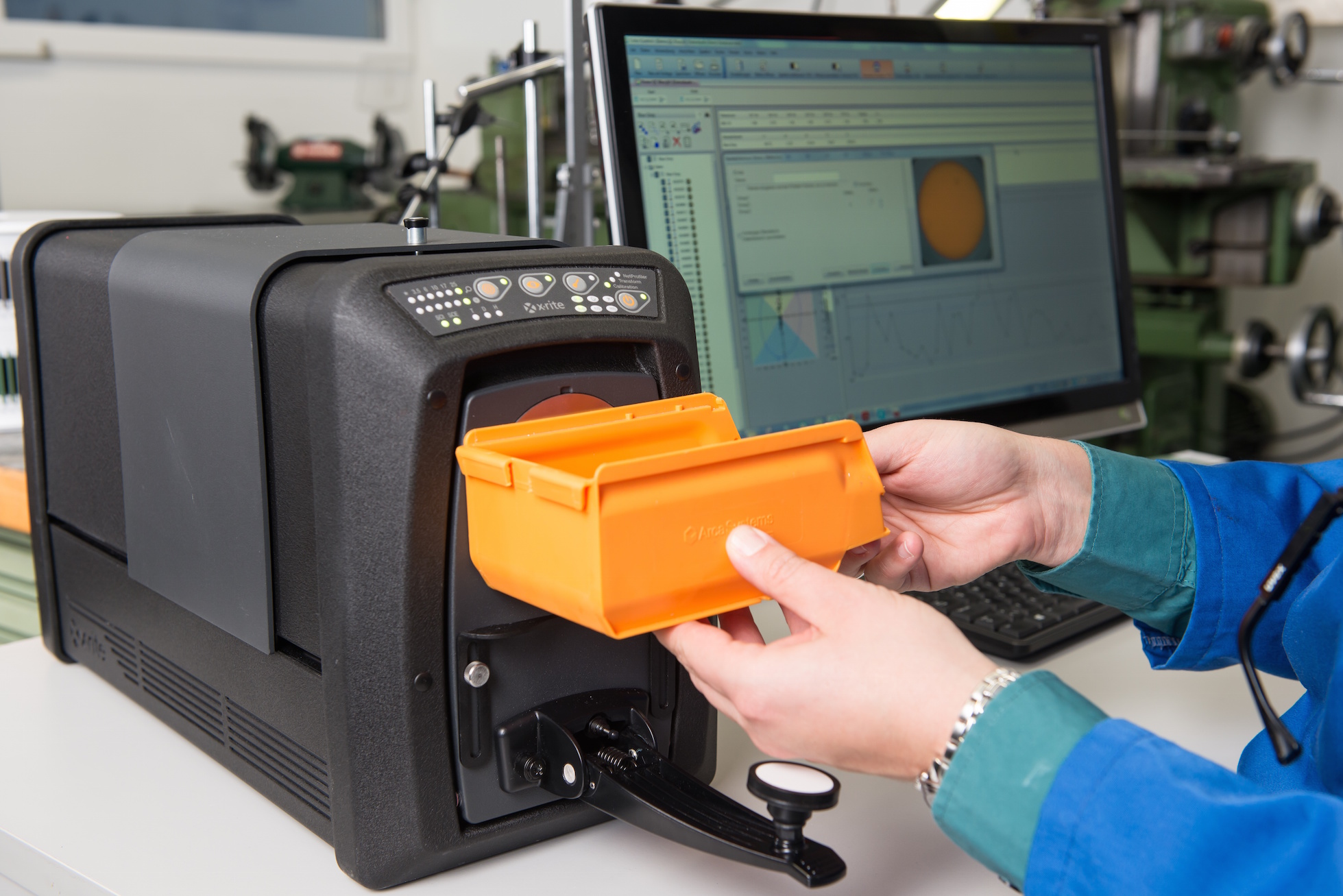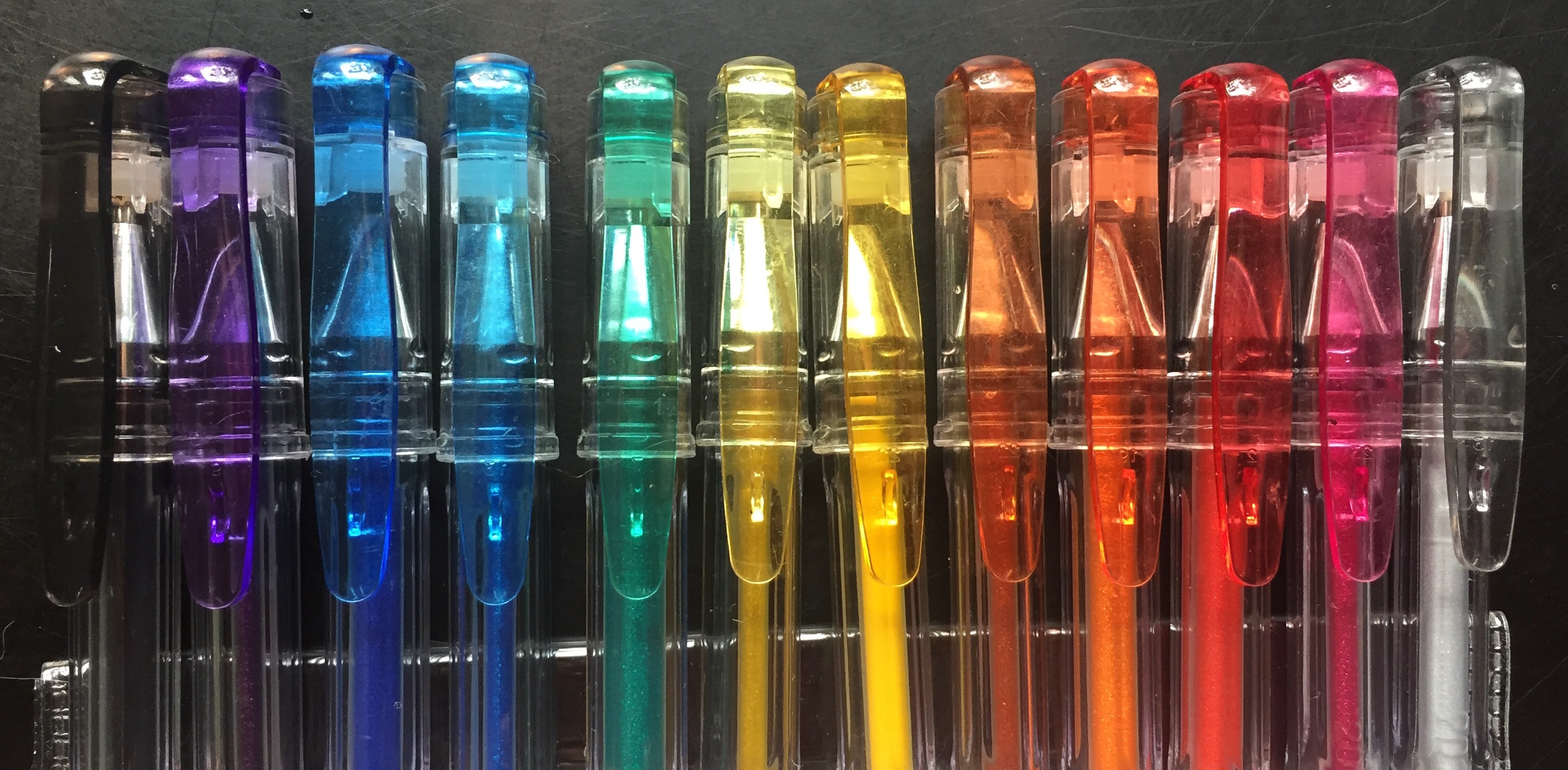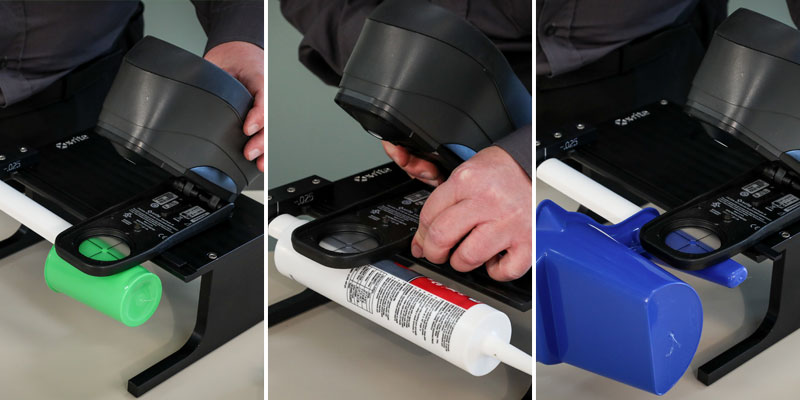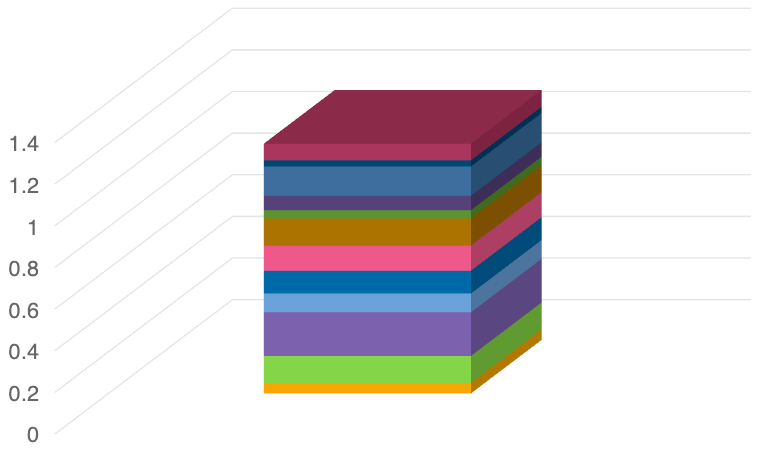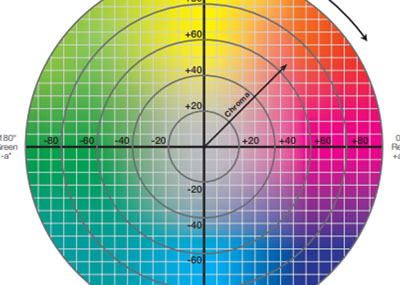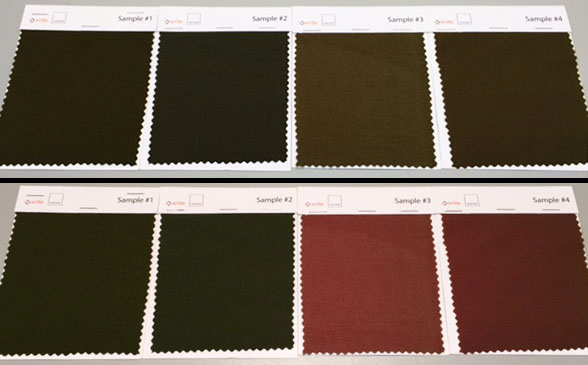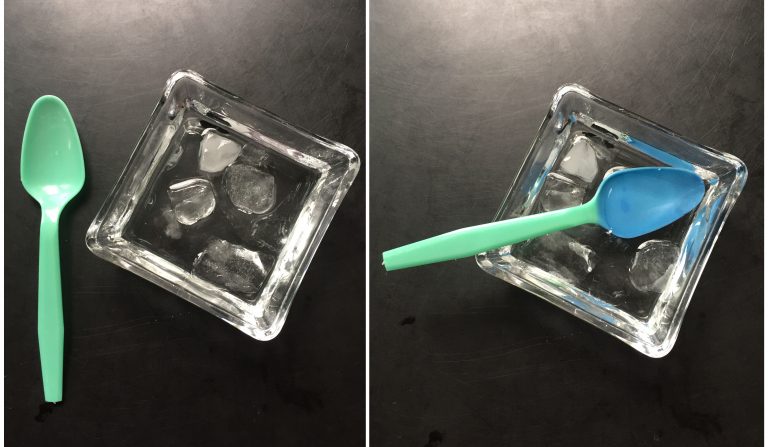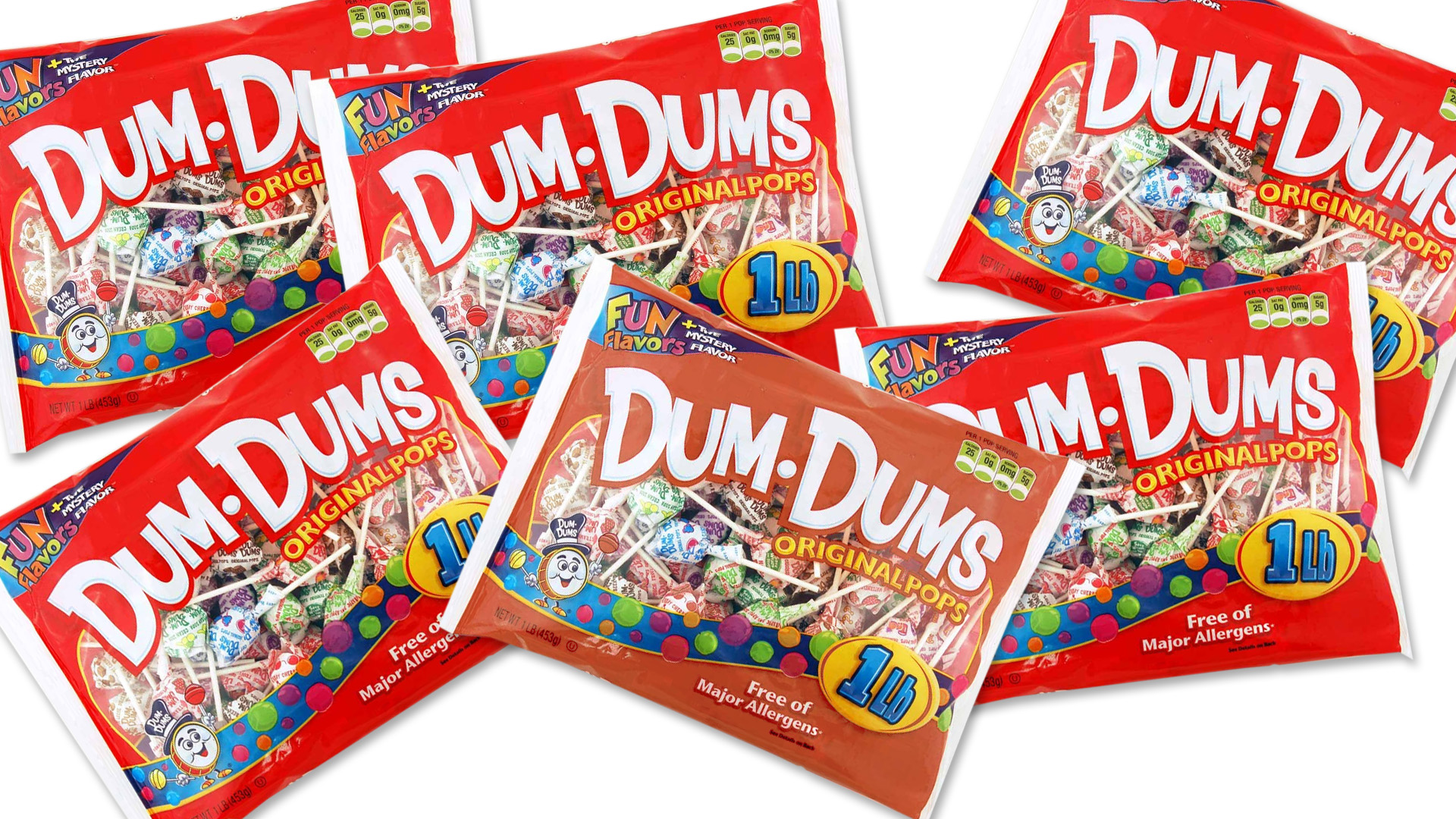Looking for a centralized location to manage your X-Rite products and services? Check out My X-Rite. Whether you need product information or support, service details, or access to learning resources, our free online portal is just a few clicks away. 24/7 Access: Easily access your personal dashboard from your computer or mobile device around the clock. Personalized Dashboard: See what matters most to you in one convenient location. Effortless Service & Support: Submit and track...
In the sign and display graphics business, as in many other segments of the printing industry, shorter runs and reduced cycle times can stress even the most efficient wide format printing operations. By implementing a color-managed RIP-to-roll (or RIP-to-rigid media) workflow, these operations can ensure that color is right the first time and every time to help speed work through the shop and meet color expectations. Photo by Peter Saunders Today we are share tips from our Color Experts that c...
What happens when you have more than 2,000 brand colors to manage across a complex global packaging supply chain? Things get complicated! Although it may seem easier to create a new color than to dig through databases or binders of color drawdowns to find the closest match, the problem comes later when you’re faced with a huge, unmanageable library. One of our clients, a well-known fast-moving consumer packaged goods (FMCG) company, understands how easily things can get out of control. They wer...
Does your quality control program include visual evaluation? If not, it should. Using the SpectraLight QC as part of a color evaluation workflow. No matter your industry, judging color is more than just measuring samples with a color measurement device. Just because a spectrophotometer says your color is within tolerance, doesn’t necessarily mean it will look right to the human eye. To minimize customer rejects, your color control process needs to include visual evaluation in a light boo...
This time of year, the internet is full of Top 10 Countdowns. It’s a tradition we’ve embraced since 1940 when the Billboard published its first chart ranking the top selling recorded songs. Since then, others have jumped on the bandwagon to highlight the most popular trends of the previous year. We’ve been publishing our top-read blogs since 2016, and we’re happy to see some educational topics like color perception, tolerancing, and spectrophotometers continue to r...
It’s important to ensure design intent is realized each time and everywhere a product appears. But with so many variables to impact print quality, how can brands utilize suppliers around the world and still achieve consistent color? Our X-Rite Pantone Packaging Color Experts have designed a series of consulting services and workshops to help you get the most from your print, packaging, plastic or textile value chain. Offered both online and onsite, these interactive sessions i...
You say color is important, but do you know why it’s so important? In reality, color is a critical element in the manufacturing process. Unfortunately, many manufacturers are realizing that getting color right is much harder than it used to be, and the brands they support are asking them to meet tighter tolerances. Here’s why. While advances in color technology – think metallic packaging, pearlescent finishes, custom fabrics and vibrant new colors – entice customers, the...
When customers are just getting started with color management, they often ask, "What is the difference between a spectrometer and a spectrophotometer?". With such a minute spelling difference, it's easy to make a quick typo and get the wrong answer for this color question. So...what's the difference? Spectrometers vs. Spectrophotometers What is a Spectrophotometer? A spectrophotometer is a color measurement device that is used to capture and evaluate color on just about anything, in...
How many trial and error steps does it take you to formulate a color? If you answered more than three, it might be time to enlist the help of a computerized solution. Computer-aided color formulation can bring huge benefits to your business. Out of the gate, even beginners can hit color targets faster, saving time, money and expensive colorants. Once you have established an accurate method, you can expect to match 95% of your color formula requirements within a reasonable color distance on the f...
With more consumer package goods (CPG) brands implementing packaging quality control programs to monitor color tolerances, converters and package printers need color measurement solutions that integrate directly with reporting systems. Our IntelliTrax2 Pro and eXact Auto-Scan Pro Scanning Solutions combine the power of our industry-leading automated scanning devices with the power of our end-to-end software solutions to meet the needs of brands, packaging converters, and commercial printers alik...
X-Rite acquired GretagMacbeth in 2006, making most GretagMacbeth handheld and benchtop spectrophotometers 20+ years old. If you're still using one of these legacy spectrophotometers and color consistency is important to your business, we encourage you to consider upgrading to a new, ISO-certified X-Rite device for the best experience. Here at X-Rite, we continue to research and improve our color measurement technology so our customers can meet tighter color control tolerances. Improved color mea...
Each year we enjoy looking back to see what our customers enjoyed reading. Here are our top blogs and learning resources from 2021. Top Blogs of 2021 Some of these blogs make the top 10 list every year. Do any interest you? Color Perception Part 1: The Effect of Light This first blog in a 3-part series offers a non-technical explanation to the way we perceive color, and the role of light in color perception. How to Calibrate your Monitor in 10 Steps Are ...
In a perfect world, you should be able to put ink in the press and simply run a job. Unfortunately, every year flexo and gravure printing operations waste ink, substrate and press time trying to get color right. Although advancements in technology have made it easier to achieve color accuracy, the variables that affect color still exist. In this three-part series, we're sharing over two dozen reasons your color might be wrong on press. If you missed the first article - Instrumentation - check i...
In a perfect world, you should be able to put ink in the press, run a job, and achieve color consistency. Unfortunately, every year flexographic and gravure printing operations waste ink, substrate, and press time trying to get color right. Although advancements in technology have made it easier to achieve color accuracy, the variables that affect color still exist. In this three part series we’ll share over two dozen reasons your color might be wrong at press side. Today’s topic lo...
In a perfect world, you should be able to put ink in the press and simply run a job. Unfortunately, every year flexo and gravure printing operations waste ink, substrate and press time trying to get color right. Although advancements in technology have made it easier to achieve color accuracy, the variables that affect color still exist. In this three-part series, we’re sharing over two dozen reasons your color might be wrong on press. We’ve already covered two important factors &nda...
The International Standards Organization has defined ISO 12647 as a set of Graphic Arts standards for printing. Included are eight parts: Part 1: Print parameters and measurement methods Part 2: Offset lithographic processes Part 3: Coldset offset lithography on newsprint Part 4: Gravure printing Part 5: Screen printing Part 6: Flexographic printing Part 7: Proofing processes working directly from digital data Part 8: Validation print processes wo...
Color measurement is used to specify, quantify, communicate, formulate, and verify color quality for color critical work. Because everyone perceives color differently, color measurement is more precise than visual evaluation. How to Measure Color Wavelength To measure color, a color measurement device called a spectrophotometer shines light onto a sample and captures the amount of light that is transmitted or reflected in the 380 nm to 780 nm wavelength range, which is the wavelength rang...
Learn about light, reflection curves, optical brighteners, and more. Illuminants Electro magnetic radiation in the wavelength range from 380 nm to 730 nm is seen as light by our eyes. Low wavelengths show as blue light, then the spectrum continues from green to yellow, orange, and red. UV radiation is located in the range below 380 nm; the range above 730 nm is called infrared radiation. The visual impression of a colored body changes by the composition of the incoming light. ...
Surface appearance can change your perception of color. Think of a glossy magazine. If the light is shining directly on the page, you may need to tilt the magazine and change the reflection angle to clearly see the colors. Likewise, a textured surface may appear to be a different color than a smooth surface of the same object. Since spectrophotometers determine a color’s spectral values by shining light onto the surface and measuring the reflectance, choosing the right instrument an...
Each year we enjoy looking back to see which blogs captured the most attention. Some make the top 10 list ever year, while others are a surprise. Here's what our readers found most interesting in 2020. Top 10 Blogs of 2020 #1 L*a*b* Color Values Like geographic coordinates – longitude, latitude, and altitude – L*a*b* color values give us a way to locate and communicate colors. Learn the history and uses of this popular color space. #2 &nbs...
COVID-19 has forced many companies to rethink the way they communicate, approve, and produce color. For some, that means trying to conduct “business as usual” from a remote location. For others, it means finding ways to manage color without travel. Either way, we know our customers are doing everything they can to sustain business while keeping their employees healthy and safe. We want to help. Over the past few months we’ve been adding new resources to our virtual resou...
As brand owners compete to make packaging stand out, commercial and flexible packaging converters and label printers are charged with achieving accurate color – on unique substrates – with shorter print runs. Many spend a lot of time mixing ink, then end up throwing it away when the color isn’t right. Others mix ink, store it, and spend way too much time trying to reuse it for future print runs. If you’re stuck in this cycle, you’re essentially paying for ink...
To establish a successful quality control program, you need good instrumentation, robust software, and trained users. But even with everything in place, there are some common pitfalls to watch for when using a spectrophotometer to analyze color quality. Measuring plastic parts with the X-Rite Ci7800 benchtop spectrophotometer. Top Five Color Measurement Pitfalls 1. Bad Standards and Samples Physical standards and samples don’t last forever. Careless handling and dirty devices can ...
Whether you’re producing textiles, automotive parts, or plastic pieces, color needs to remain consistent or the final product will be rejected. Unfortunately, there are many ways for color errors to creep in during manufacturing. Creating and using accurate digital color standards is one way to combat these errors. Digital color standards can be used in software to specify and communicate color, formulate colorants and raw materials, and control color quality. They give brand owners peac...
No matter the industry, our customers are all working toward the same goal: Achieve accurate color and keep production moving. Even in the best conditions, color data can be a challenge to capture and share. COVID-19-related travel bans and social distancing guidelines are making it harder than ever. Today we’ll share three easy ways to remotely share color data so you can achieve your color goals without shipping physical samples or making onsite visits. The Benefits of Digit...
Our customers who are now working remotely need to be aware that changing a small variable – such as approving color from home under a different light source, or emailing specifications instead of sending a physical sample – can introduce color issues that risk creating a larger color problem. The first and most critical stage to color control is accurate color communication. These resources will help you get started. The Importance of Color Communication Blog | Many color...
Spectrophotometers (“spectros” for short) are color measurement devices used to capture and evaluate color. As part of a color control program, brand owners and designers use them to specify and communicate color, and manufacturers use them to monitor color accuracy throughout production. Spectrophotometers can measure just about anything, including liquids, plastics, paper, metal and fabrics, and help ensure that color remains consistent from conception to delivery. &nb...
Phone and computer screens are the window into the digital world of color, but if you are approving colors via email or text you need to be aware of the limitations. For starters, each of your devices relies on a different color model to display color. Input devices – your camera and monitor – use the additive color model to display color. They start with darkness and add red, green, and blue light to create a spectrum of colors. Printers, on the other hand, use the s...
Does your quality control program include visual evaluation? Lighting plays a huge role in how we perceive color. It can help you verify whether the color of your product is acceptable and ensure it remains accurate in every possible lighting condition after purchase. Many of our customers are finding visual evaluation to be even more important as they transition color reviews and approvals to a different location, such as in the home office or to another remote environmen...
So much goes into the way you perceive color, including light, genetics, the environment, human traits, and even fatigue. You may also be among the 1 in 255 women and 1 in 12 men who have some form of color vision deficiency. Our online color challenge is a fun way to better understand your color vision acuity. Regardless of your color vision acuity, if you are communicating, evaluating, or approving color from a new location your eyes may trick you into making diff...
Color has always been a critical factor for our customers. Due to the COVID-19 pandemic, many are now trying to design, specify, communicate and ultimately achieve accurate color from remote locations or with less staff and fewer resources. Are you having trouble maintaining your color program in this unprecedented time? We've compiled our most popular resources – blogs, videos, whitepapers, webinars, and case studies – to help you connect with your supply chain and ...
G7® is a proof-to-print process control method that allows you to reliably and efficiently match the visual appearance of the output from multiple printing devices. It works by defining the gray balance and NPDC curves in conjunction with the traditional method of measuring tonal value increase (TVI/dot gain) for each color. G7 can be applied to any type of printing, regardless of the type of ink or printing method, including all types of digital, offset, flexo, gravure printing. It&r...
Durable goods and consumer electronics are no longer destined to be white, gray, and black. In fact, consumers are moving towards more classic colors and special effect finishes like metallics. To capitalize on this trend, brands need to bring innovative designs in new colors faster to market than ever before. One trending color, the PANTONE Color of the Year 2020, is sure to capture the attention of durable good and consumer electronic brands. It is a simple, timeless, elegant, and endur...
Inter-instrument agreement is a very important consideration when selecting color measurement devices for your workflow. Unfortunately, it’s such a technical topic that it leads to a lot of confusion about what it means and why it’s important. The Ci7860 sphere benchtop spectrophotomter is has an inter-instrument agreement specification of 0.06 average Delta E*, enabling brands to create the most precise master color standards. Today we’re making it as simple as possibl...
Although plastics professionals have been managing color issues in the production workflow for many years, the dynamics are once again changing. From consumer electronics to automotive parts and flexible packaging, a growing number of brands are incorporating special effect finishes into their products. While metallics, pearlescents, and other complex finishes are beautiful and help brands stand out on the shelf, they also introduce new color management challenges into the manufacturing pro...
If you work in the print and packaging industry, standards can help you set clear expectations for clients, solve problems in your workflow, and improve productivity. They can also bring an independent perspective to production. Printers aren’t the only ones who should keep up with standards. Brands who are concerned with quality, price, and speed to market can also benefit because it allows them to compare print providers and choose the best candidate. The ISO and other standards organiz...
Spectrophotometers are color measurement devices that measure color to ensure it remains consistent from the time it’s specified until final quality check. They can be used to measure everything from liquids and plastics to paper, metal, and fabrics for just about every industry. Here Are Our Top Spectrophotometer Picks for 2019. Best Spectrophotometer to Create Digital Standards Using a digital standard is the most accurate way to specify and communicate color, des...
Controlling color on cylindrical-shaped items like cups, cans, and tubes is a challenge because it’s hard to properly align the measurement device with the sample. Many printers and manufacturers cut a piece from the finished product and lay it flat to take a measurement. While this method works, each sample takes time to cut, wastes product, and risks the safety of the employees who are cutting the samples. A Faster, Safer Solution X-Rite’s Cup and Cylinder Fixture works ...
Your customer rejected your latest shipment due to color. You checked the color before you sent it and it passed tolerance… You did everything the same way last time and it passed tolerance… So why did it get rejected now? We get this question from our customers all the time. The Dreaded “Error Stack” Color rejections create waste and increase production costs. Unfortunately, there are a lot of variables that contribute to the color you produce,...
For the last few Decembers, we’ve provided you with a list of “top color measurement blogs” for that respective year. As we reviewed this year’s list, we noticed that your favorite/ the most-read blogs could be categorized into a few buckets. So, without further ado, here’s 2018’s top blog topics! 2018’s Most Popular Color Measurement Topic: Tolerancing Not to our team’s surprise, Tolerancing – what it is/what it means for your busines...
Each year, Pantone announces its highly anticipated “Color of the Year”. The selection is intended to serve as a strategic direction for design and color-conscious industries as well as a conversation piece around our culture, where it is going and what we collectively need…and it certainly gets everyone talking about color! Color is no longer just something we see and appreciate - it enhances and influences the way we experience life. Color, as a strategic element of d...
Like geographic coordinates – longitude, latitude, and altitude – L*a*b* color values give us a way to locate and communicate colors. What’s the history of L*a*b*? In the 1940’s, Richard Hunter introduced a tri-stimulus model, Lab, which is scaled to achieve near uniform spacing of perceived color differences. While Hunter’s Lab was adopted as the de facto model for plotting absolute color coordinates and differences between colors, it was never formally accepted as...
To understand how color management works, you need a basic knowledge of the additive and subtractive systems of color reproduction. Both use a small number of primary colors that combine to produce a large number – or gamut – of colors… but the way they do that is quite different. In our Color Perception Part 1: The Effect of Light post, we explained how the visible color spectrum (we know it as the rainbow) encompasses light wavelengths from approximately 380 to 720 nm....
At the end of each year we enjoy looking back at our most popular blogs because it’s a great way for us to understand what interests you – our readers. As the years go by, we have discovered a few make the list again and again. This year the Top Ten is split down the middle between color theory and manufacturing best practices. Have you read them all? Top Five Color Theory Topics of 2017 1. Color Perception Part 1: The Effect of Light Remember “The Dress?” Was it ...
Using a light booth to visually judge color is a great start to a successful color evaluation program. It allows you predict how color will look under multiple light sources so there won’t be any color surprises when the light changes over the life of the product. Introducing a color measurement device to capture spectral data is the next logical step. For a really great color program, you need to use both a light booth AND a spectrophotometer. This dynamic duo offers benefits you can&rsqu...
The World Series starts next week. While players and fans are gearing up for the big event, stadium groundskeepers are preparing, too. You’ve surely seen those meticulous patterns in the grass – crisscross, spiral, plaid – but do you know how the groundskeepers create them? Thanks to a phenomenon called geometric metamerism (aka gonio-appearance), the grass really is greener on the other side. Read on to learn more about this optical illusion that can trick your eyes and wreak havoc on y...
Color is our perception of reflected light across the visible spectrum. When light hits an object, it absorbs some rays and reflect others. The color of light that reflects back into our eyes is the color we perceive. The more light an object absorbs, the darker it appears. With black, very little light is reflected. Pure black in the presence of light wasn’t achieved until 2014 when Surrey NanoSystems announced the invention of Vantablack. This high-tech artificial substance absorbs 99....
We frequently get calls from customers who can’t figure out why their measurements vary, even when they’re using maintained devices. Why would a sample read one way one day, then slightly different another? Many times the culprit is thermochromaticity, and it becomes an even bigger problem as the seasons change. Every kind of material changes color with temperature. These changes cause the material to exhibit a shift in reflected wavelengths of light, which can alter our perception....
Have you ever sent out a job that passed your inspection, only to have the customer reject it for out-of-tolerance color? You recheck the data and the instrument says the color passed the agreed tolerance… why is the customer saying it doesn’t? We get a LOT of these conflicting measurement calls in technical support. The solution is simple – document a color control program that clearly defines how to assess color, then make sure everyone (including your customer) follow...
Did you read our blog: Are You Using The Right Tolerancing Method? If not, check it out. Today we’re taking the topic one step further to investigate how tolerances are chosen in different industries. A pass-fail tolerance is the amount of color variation that is considered commercially acceptable. In part, tolerances are driven by customer expectations. While color tolerances are very tight in the automotive, plastics, and paint & coatings worlds, they can be much less strict in other...


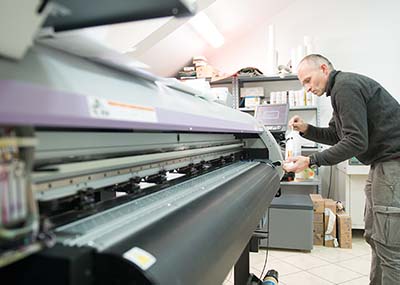

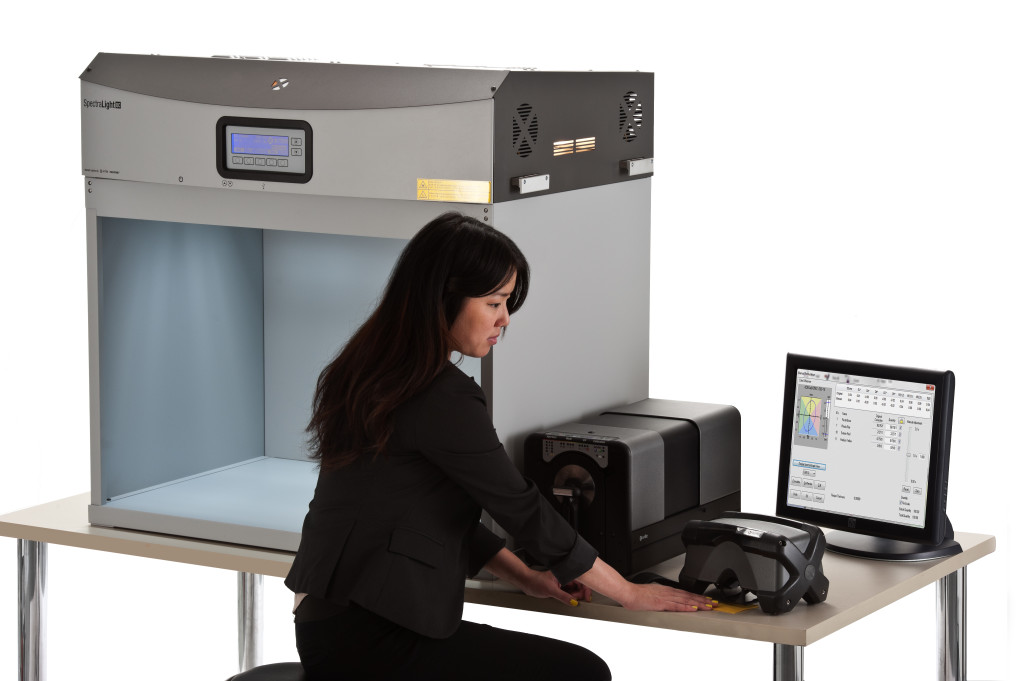
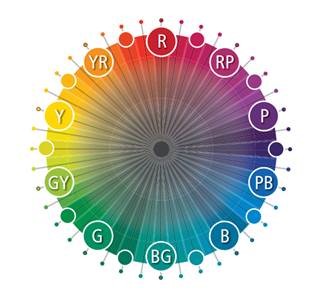
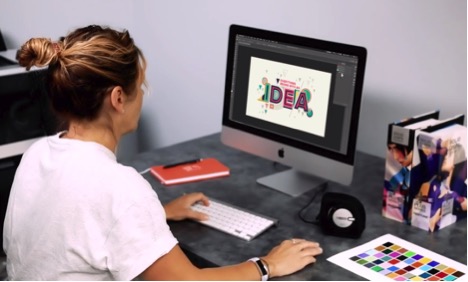
.jpeg?h=285&la=en&w=400&hash=6F4520F30E11DA92838E11C8E55C4BFB32664563)

